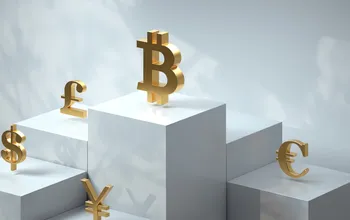Understanding Spot Bitcoin ETFs: A Beginner's Guide
Spot Bitcoin Exchange-Traded Funds (ETFs) debuted in the US in January 2024 and have stirred conversations across the financial landscape since then, but how do these financial instruments operate? Here’s an easy-to-understand breakdown.
What Makes Spot Bitcoin ETFs Unique?
What sets the approval of spot Bitcoin ETFs apart is the tangible involvement of actual Bitcoin.
The biggest difference between a futures Bitcoin ETF and a spot Bitcoin ETF is the ownership of assets: a spot ETF engages in the purchases and management activities of actual Bitcoin, while a futures ETF simply provides investors with exposure to Bitcoin futures contracts on CME.
Each type has its pros and cons, and just like how spot and futures markets for all assets have and will still coexist for diversification and hedging purposes, we expect futures ETFs to be hanging around to satisfy different risk appetites as well as investment needs.
Hence, the traditionally conservative institutional investors will now have a streamlined avenue to add Bitcoin exposure directly through spot ETFs. This shift may further legitimize Bitcoin as an asset class and enhance its acceptance among mainstream financial institutions.
How Do Spot Bitcoin ETFs Operate?
Seed Fund
The journey of a Bitcoin ETF starts with a fixed amount of Bitcoin, known as a seed fund, which must be approved by the SEC (U.S. Securities and Exchange Commission).
Bitcoin ETF Share Value
A spot ETF holds Bitcoin directly, and its share value is directly linked to the spot price of Bitcoin, not the supply and demand of the shares.
The ETF Provider, the Investor, and the Market Maker
The three key parties in any ETF are the ETF provider, the investor, and the market maker.
Currently, most spot bitcoin ETF trading occurs directly between investors. However, in situations where the market is unbalanced, market makers can either create new shares or buy them back to maintain market equilibrium, regardless of their immediate access to physical shares or funds.
For instance, should Alice wish to acquire ten shares but face a shortage in supply, a market maker intervenes by generating ten shares for sale to Alice. Subsequently, when Bob decides to offload his ten shares, the market maker allocates Alice's payment to Bob, thus ensuring liquidity and aligning the ETF’s price with Bitcoin's market price through share adjustments.
For the investors (Alice and Bob), the execution of their orders appears instantaneous.
On the part of the ETF provider, it's crucial to maintain enough Bitcoin reserves to comply with SEC regulations. They have to purchase or sale of Bitcoin for their funds within 24-48 hours (T+1/T+2) post-receipt of the trading order. This process is known as the ETF flow, with inflows indicating investments into the fund and outflows indicating share redemptions or withdrawals.
While the basics are covered above, it's important to note that the operation of these ETFs is affected by a wide range of factors, including market dynamics, regulatory frameworks, and risk management strategies.
Disclaimer: The opinions expressed in this article are for informational purposes only. This article does not constitute an endorsement of any of the products and services discussed or investment, financial, or trading advice. Qualified professionals should be consulted prior to making financial decisions.
Disclaimer: The content of this article solely reflects the author's opinion and does not represent the platform in any capacity. This article is not intended to serve as a reference for making investment decisions.
You may also like
ETH breaks out and SOL surges higher, keeping crypto markets tight

Polymarket taps Chainlink to power real-time prediction markets

Michael Saylor’s Bitcoin obsession: How it all started
Solana open interest hits $16.6B as traders set SOL price target above $250